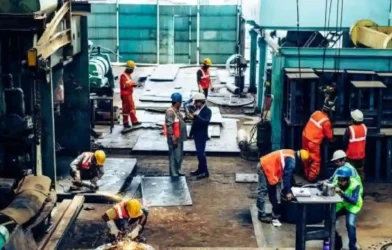Subtotal ₹0.00
Institutional investments in Indian real estate continued to display resilience in Q3 2025, reaching $1.76 billion — marginally down 2% from the previous quarter but up a strong 83% year-on-year. The quarter marked a significant shift in the investor landscape, with domestic funds taking centre stage as foreign participation declined sharply. India-focused institutional investors now account for more than half of total inflows, underscoring rising local confidence and the market’s growing self-reliance amid global uncertainty.
Foreign investments dropped precipitously to $140.69 million in Q3 2025, compared with $1.19 billion in Q2 2025, marking an 88% QoQ decline and 68% YoY fall. Their share in total institutional inflows fell from 66% in Q2 2025 and 46% in Q3 2024 to just 8% this quarter, according to a report by Business Standard.
In contrast, India-focused institutional investors — including real estate funds, domestic financial institutions, and sovereign-backed entities — increased their participation by 166% quarter-on-quarter and 115% year-on-year, investing $892.22 million in Q3 2025.
Their share in overall institutional investments rose to 51%, from 19% in the previous quarter and 43% in Q3 2024, the highest ever quarterly contribution from domestic investors.
This trend reflects rising confidence among local investors in India’s economic stability and the long-term potential of its real estate market, particularly across the commercial, warehousing, and premium residential segments.
“Domestic investors are now driving India’s real estate capital flows. Their growing role highlights the sector’s financial maturity and the shift toward self-sustaining growth,” said Shrinivas Rao, FRICS, CEO, Vestian, in the company’s latest quarterly report.
The co-investment model — where foreign investors partner with domestic institutions or developers — has emerged as a preferred structure amid global volatility.
In Q3 2025, co-investment inflows rose to $726.58 million, up 173% quarter-on-quarter and a massive 562% year-on-year, accounting for 41% of total institutional inflows compared to just 15% in the prior quarter.
This hybrid approach allows foreign funds to share risk, leverage local expertise, and maintain exposure to Indian assets while navigating global macro headwinds.
“Foreign investors are not abandoning India — they’re simply becoming more collaborative,” said Rao. “Co-investment partnerships are bridging the confidence gap and anchoring foreign capital in domestic structures.”
The commercial sector accounted for the largest share of investments (79%), surpassing its earlier record of 61% in the last quarter and 71% in the same quarter a year ago. In terms of value, investments soared to nearly USD 1.4 Bn, registering a robust annual growth of 104%.
The residential sector attracted investments worth $191.7 million in Q3 2025, accounting for 11% of the total—down from 21% in the previous quarter. This reflects a sharp quarterly decline of 49%, despite registering a 6% year-on-year growth.














